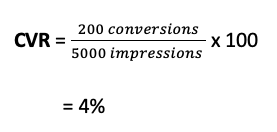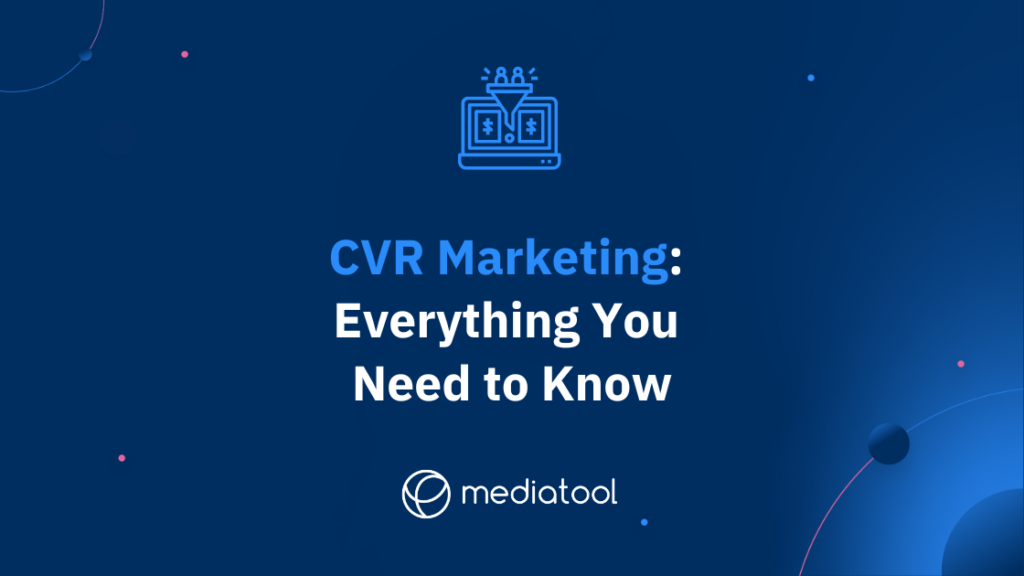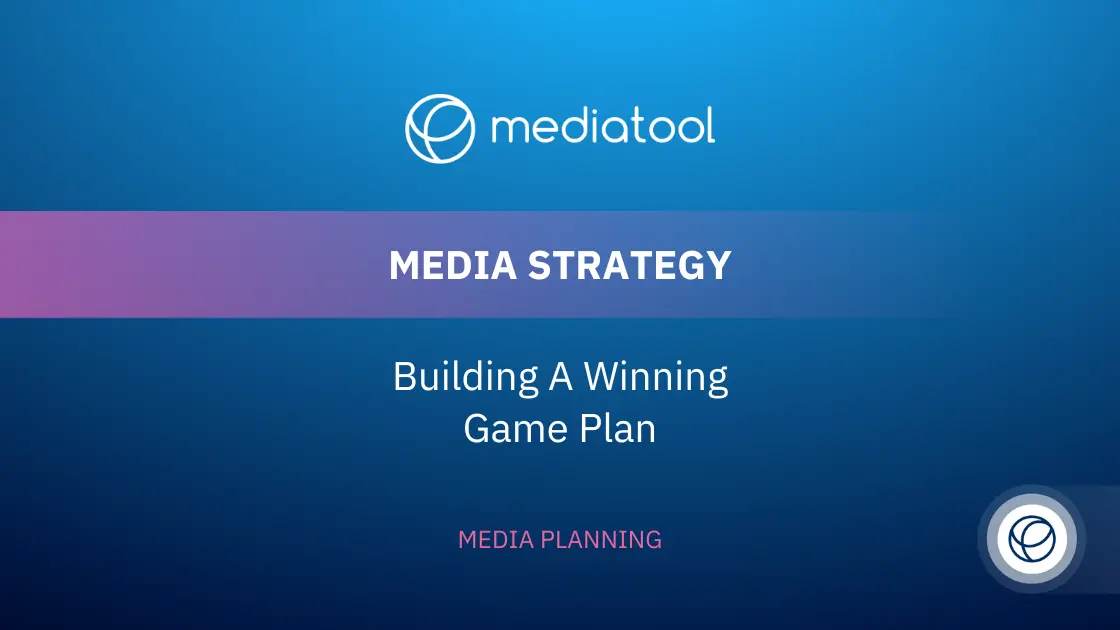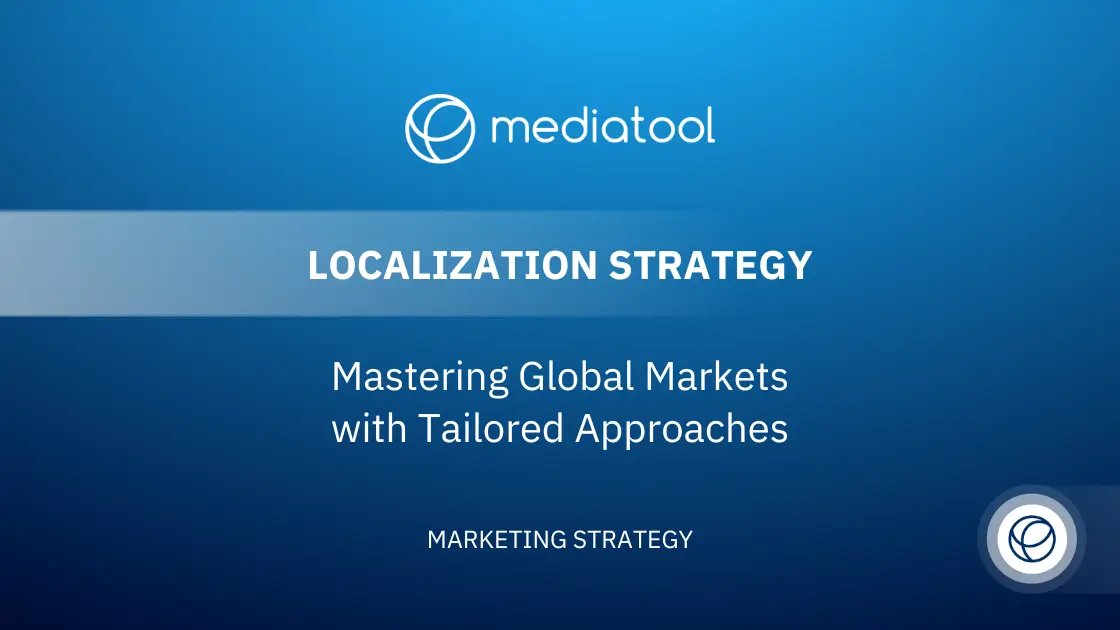Enhancing conversion rates is pivotal for brands, offering them increased opportunities to acquire customers and boost profits. This marks a shift towards a new marketing philosophy, raising the question: should organizations invest in conversion rate or CVR marketing campaigns?
For years, marketing has centered around ad campaigns aimed at persuading people to spend on products and services. However, the rise of digital marketing has revolutionized traditional approaches, presenting a multitude of new possibilities.
This article covers CVR marketing and its advantages for brands, including strategies to calculate conversion rates effectively.
It explores how digital marketing campaigns, particularly CVR marketing campaigns, are integral in guiding website visitors through the desired action, be it app installs or landing page interactions.
It emphasizes the importance of a marketing team in developing a marketing strategy that appeals to the target audience, utilizing tools like the CVR formula, conversion rate optimization, and tracking tools to measure campaign performance.
Key elements like ad creative, social media platforms, and high-quality content are crucial in generating conversions and, ultimately, revenue.
By understanding and applying these strategies, brands can increase their conversion rates, turning potential customers into actual customers and driving more conversions on their websites or ecommerce stores.
This approach goes beyond mere numbers, focusing on user behavior, continual testing, and optimizing performance for a higher CVR and more effective lead generation.
What Is CVR Marketing?
CVR marketing is a specialized digital marketing strategy focused on elevating conversion rates. It involves tactics designed to encourage potential customers to take a desired action, enhancing the website CVR (Conversion Rate) in the process.
Types of Conversions in CVR Marketing
Key actions considered as conversions in CVR marketing include:
- Making a purchase of a product on an ecommerce store.
- Subscribing to services offered by the company.
- Signing up for newsletters, contributing to lead generation.
- Contacting the company through phone calls or emails.
- Engaging with the company’s social media platforms, including following accounts and liking posts.
- Downloading digital products like ebooks, whitepapers, or mobile apps directly from the company’s web page.
- Filling out survey forms, providing valuable user behavior data.
Integrating CVR Strategies in Digital Marketing
Incorporating CVR marketing strategies into broader digital marketing campaigns can significantly increase conversions. This involves a synergy of various elements like ad campaigns, landing pages, and high-quality content aimed at the target audience.
Why Is CVR Marketing Important?
Although actions like subscribing to a brand newsletter might not seem as immediately impactful as a purchase, they play a crucial role in CVR marketing. This raises a question: should marketers allocate budget towards newsletter marketing and other CVR-related activities?
Intent and Engagement in CVR Marketing
The key lies in understanding user intent. It’s rare to convert leads to customers with just a single visit to a website. By enticing casual website visitors to engage, such as through newsletter sign-ups or social media follows, you open doors to further interaction.
Building Brand Awareness and Relationships
This engagement educates potential customers about your brand, products, or services. The more they know, the higher the likelihood they’ll eventually make a purchase.
Strategizing and Tracking CVR Marketing Efforts
Creating a CVR marketing campaign is just the beginning. Monitoring campaign performance with tools like the CVR formula and conversion rate optimization techniques is essential. Streamlining these strategies helps in maximizing the impact of your investment without the need to deploy numerous campaigns.
Understanding Campaign Effectiveness and CVR Implications
A high CVR is indicative of a successful campaign, signaling opportunities to attract more customers and generate revenue. Neglecting to track campaign results can lead to overspending on less effective tactics.
This approach to CVR marketing not only aims to increase conversions but also focuses on understanding user behavior, optimizing landing pages, and enhancing overall digital marketing strategies.
It’s about using the right tools to count conversions, continually test different aspects, and adjust ad campaigns to improve click-through rates and lead generation.
Ultimately, this leads to building stronger relationships with a broader target audience, driving more conversions on your web page or ecommerce store.
To know your CVR, you must know how to calculate the conversion rate.
What Is the Conversion Rate Formula?
Before going into the conversion rate formula, here are the steps to calculate the conversion rate:
1. Identify the Conversion
As mentioned earlier, there are different types of conversions. You must focus on a specific metric—such as the purchase of a product or service—and determine the conversion rate.
Most businesses employ various CVR marketingstrategies, which means multiple conversion computations.
2. Use Tracking Tools To Count Conversions
It isn’t easy to manually monitor your marketing campaign, especially when most are done through digital channels. It would help if you had marketing tools to track performance.
Conversion monitoring or tracking tools are software services that measure user activities and generate reports for businesses to assess their campaigns quickly.
Aside from monitoring conversions, it would help if you looked at impressions. These are the number of times the advertisement appeared on a particular platform. The number of impressions will be used to evaluate conversions and determine success.
Utilizing Tools and Metrics for Enhanced CVR
By continuously tracking tools such as the CVR formula and conversion rate optimization techniques, marketing teams can calculate CVR more accurately, adjusting marketing efforts for better campaign performance and higher CVR.
This approach not only counts conversions but also focuses on understanding web users, their interactions on landing pages, and the effectiveness of each call to action.
It’s a critical metric in assessing the overall success of digital marketing campaigns, guiding efforts to generate more customers and revenue.
3. Calculate CVR

Let’s input some numbers into the formula.
A shoe company, Runner’s Mate, wants people to learn more about the company and its products. However, it’s a relatively new brand, so it’s still difficult to draw audiences to its eCommerce store and social media accounts.
But if more people can be aware that Runner’s Mate uses organic raw materials and that 1% of its profits go to charity, then they might purchase the shoes and even tell their friends to do the same.
So, Runner’s Mate creates an ad and pays for 5000 impressions. The eCommerce mobile app linked in the ad gained 200 installs during the ad campaign. What is the conversion rate for this ad campaign?

Now, the question is: Is 4% a good conversion rate? Was the ad campaign worth the investment, and should the brand continue along these lines to promote its eCommerce store?
What is a good conversion rate?
Generally, 2% to 5% is an excellent conversion rate. This means Runner’s Mate targets the right audiences with their ads and that warm leads complete the intended actions. They can leverage social media, email, and more paid ads to spread the word about their brand and what their products can offer.
As a point of reference, in the third quarter of 2023, e-commerce websites in the beauty and skincare industry recorded the highest online conversion rates, standing at 2.7 percent.
Why Conversion Rate Matters
Every brand employs various marketing campaigns to generate conversions. For each strategy to be sustainable, it must deliver measurable results that benefit the brand. The conversion rate is one way to measure a campaign’s success.
Successful CVR marketing campaigns must be continued, while ineffective ones should be improved or scrapped altogether. You can’t keep spending money on campaigns without a solid return on investment (ROI).
It’s not just about money, either. Let’s go back to the previous example of Runner Mate’s ad campaign for mobile app downloads.
If there are fewer than a handful of app installs after a month, it’s clear that the campaign has failed. But upon assessment, the marketers realized there was an issue with the app’s UX, so people had a difficult time opening the app.
They can get the app developers to fix the issue and restart the ad campaign. Future assessments will reveal other such problems that can be solved.
CVR marketing can also help you with media planning or creating a roadmap to determine the best media or digital channels to reach your audience. You’ll have more success prioritizing platforms your target customers frequent rather than stretching too thin across all media.
How To Use CVR Marketing To Increase Your Conversions
The internet has created a more expansive world for marketers. Better yet, it’s more affordable compared to traditional advertising. The advantage of digital media is that its results can be easily measured.
You can immediately adjust your campaigns to improve conversions based on your CVR results.
Here are several strategies to boost results:
Live Chat
A live chat will engage website visitors who are ambivalent about your product or service offerings. Your potential customers may have questions about your brand, and getting answers instantly with a live chat may convince them to convert. Thirty percent of consumers anticipate the availability of live chat features on a website.
Be Clear
Communicate your call-to-action (CTA) clearly on all your marketing collateral. Some web users may not know what to do next because your ad’s CTA wasn’t strong or prominent enough. For maximum visibility, opt for multiple placements so people won’t miss them.
Clarity also refers to your website. Minimize clutter so visitors can navigate unhindered, and your CVR marketing strategies can bear fruit. Eliminate distractions from your landing pages, or they will take away the web user’s attention.
Test Your Campaigns
Check and test the campaigns multiple times to ensure they generate the intended results. Troubleshoot all campaign elements, such as web copy and images. Your ads must be free of grammatical errors and engaging enough for your target audience to read or skim.
Make sure all links open to the correct and relevant pages. Don’t waste any clicks—ensure leads can immediately perform your intended action.
Incorporating A/B testing into your CVR marketing campaign is essential. This research methodology involves comparing output A and output B to determine which performs better. With over 50% of marketers already using A/B testing to boost conversion, it’s a proven approach to refine your campaign. Once you’ve developed a strong campaign, A/B testing helps ensure it also yields a robust CVR.
Shorten Forms
Make it easy for your target audience to convert. Do away with long forms because people will not have the patience to complete them.
According to a study, people usually leave a website after 10 to 20 seconds. That means you have half a minute to impress and attract a web visitor’s attention.
Giving them a long form to fill out to subscribe to a newsletter or sign up for a mailing list will likely drive them away.
Track Visitor Activity On Your Site
Why are people on your website? Are they browsing specific products or services? Are they buying? It’s essential to understand what people are doing on your website. Track their journey from the moment they click on a landing page and the pages they browse.
If a vast majority of web visitors click away from your site without purchasing or converting in any other way, you have work to do.
CVR Marketing Takeaways
CVR stands as a pivotal metric in the realm of digital marketing. It’s essential for evaluating the effectiveness of each CVR marketing campaign. This metric guides companies in channeling investments towards activities with a strong return on investment (ROI) and refining those that underperform.
Strategic Importance of CVR
Understanding and utilizing CVR is fundamental in crafting sustainable marketing strategies. It’s a critical component in saving costs, acquiring more customers, and boosting revenue. A strong CVR reflects the campaign’s ability to convert website visitors into customers, a key goal in digital marketing efforts.
Effective Campaign Creation and Optimization
Successful CVR marketing campaigns and conversion rate optimizations are achievable with the right set of tools. With Mediatool, businesses can efficiently manage a variety of campaigns, from ad campaigns on social media platforms to targeted landing page promotions. These tools offer insights into user behavior, campaign performance, and conversion rates, enabling a more tailored approach to reach the target audience.
Maximizing Campaign Outcomes
With tools to continually test and track CVR, digital marketing campaigns can be fine-tuned for higher effectiveness. This includes optimizing landing pages, ad creative, and call to actions, all while keeping an eye on the conversion rate formula and other key performance indicators. Regularly measuring and adjusting campaign elements ensures a dynamic approach to marketing, ultimately leading to more conversions, higher CVR, and effective lead generation.
CVR marketing is not just about counting conversions; it’s about leveraging data and insights to generate more leads, increase conversions, and continually enhance the overall marketing strategy for better engagement with potential and existing customers.





